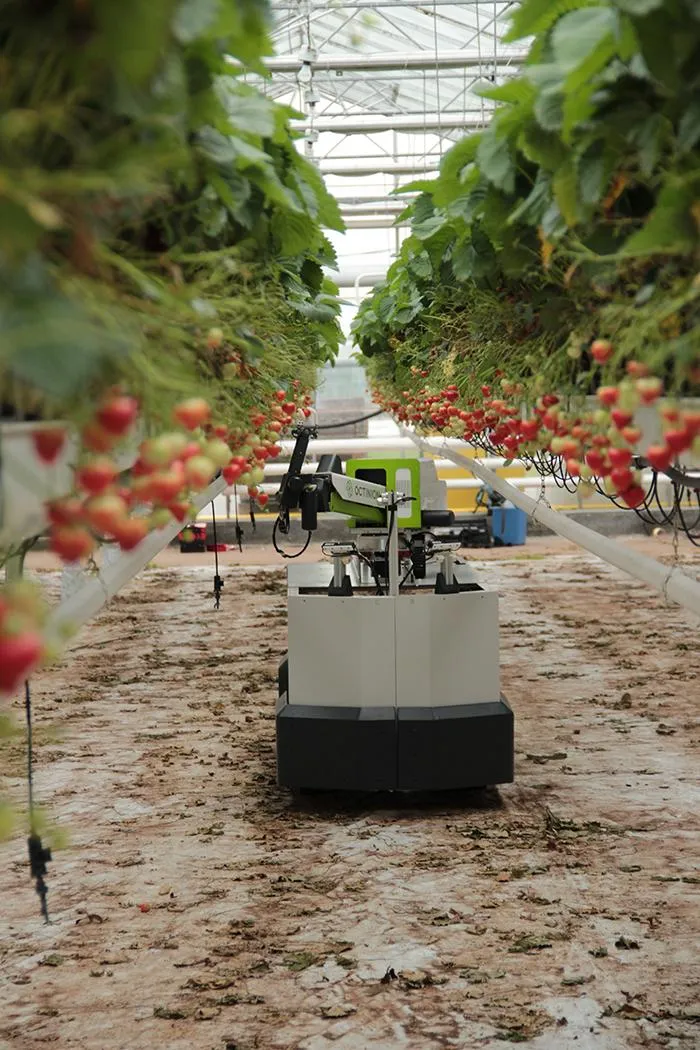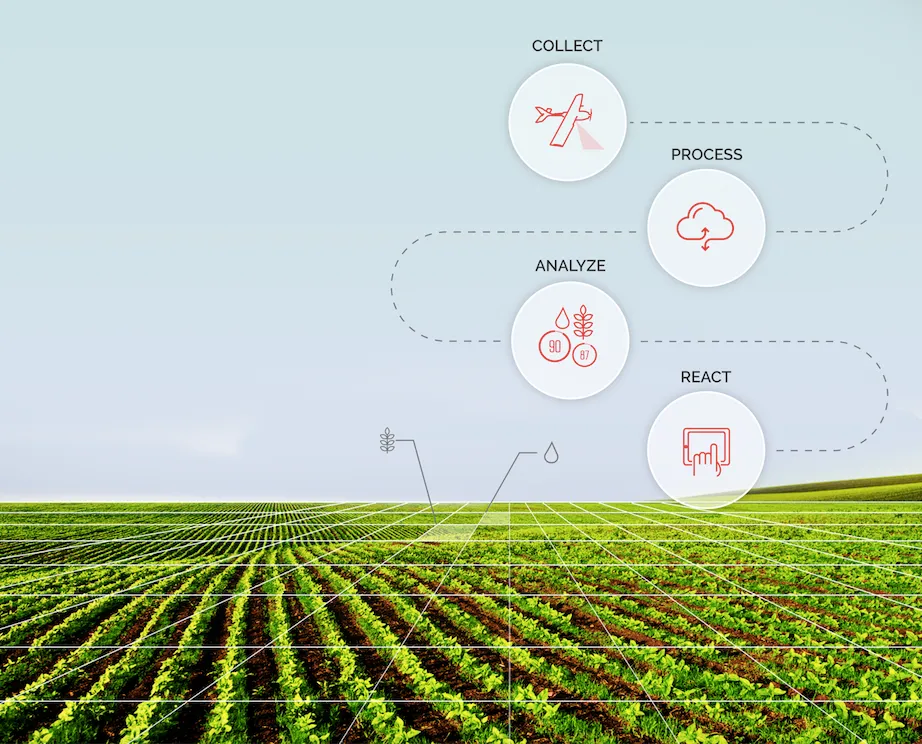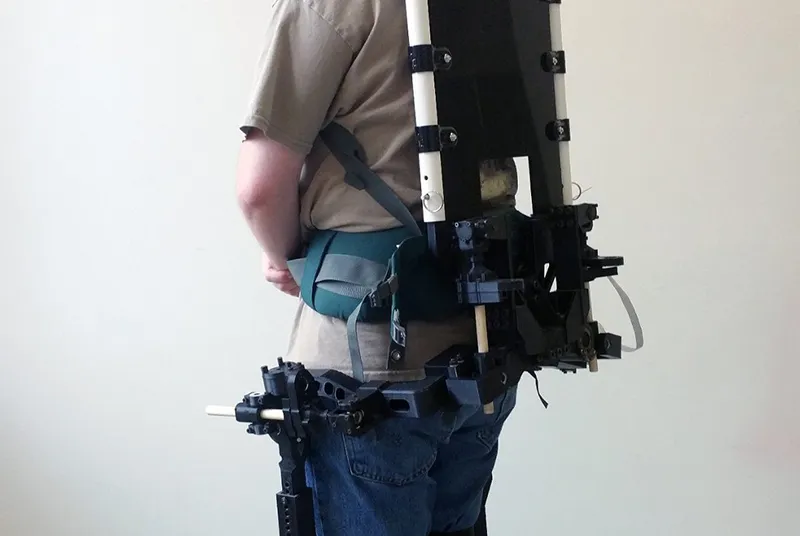Five Roles Robots Will Play in the Future of Farming
From picking fruit to pulling weeds, robotics are bringing precision farming to life
/https://tf-cmsv2-smithsonianmag-media.s3.amazonaws.com/filer/10/46/1046326b-fa9d-46c2-8afb-3e7386b3da79/agricultural_robots.jpg)
Farmers have always been diligent data collectors, knowing approximately what each acreage yields or how much milk an individual cow produces. But with the complex data collecting devices of today’s world, agriculture is in the midst of a high-tech revolution—particularly in the area of precision farming.
Farmers can use the same “big data” tools that are integrated into other industries. Things like drones that communicate with satellites to collect data while soaring over a field. The internet of things era means just about anything in our lives can be linked to a WiFi connection and the same applies for farming. For example, Wifi-enabled moisture sensors can help farmers conserve water by only watering parts of the field that need it most. Cow tags can be linked to GPS or even “Fitbit-like” devices to track their vitals remotely. Most machines can be programmed to use machine-learning; for example, fertilizer application equipment can be trained to “see” a field and only spray plants that need a boost, saving farmers product and money.
“The future of farming is becoming more sophisticated,” says Peter Liebhold, a curator in the Division of Work and Industry at the Smithsonian’s National Museum for American History. “The notion of farmers wearing denim overalls with a straw in their mouth is dead.”
It might not seem immediately intuitive, given the Old McDonald stereotypes people grow up with, but one major area of tech that stands to be highly influential in bringing precision farming to life is robotics.
Today’s farmers face lots of challenges: an aging workforce, a shortage of low-cost labor, environmental hazards and climate change, to name only a few, notes Jordan Berg, a National Science Foundation program director for their Future of Work initiative, which supports research “at the intersection of future work, technology, and workers.” And for every problem there seems to be a robot or robotic device in the works to fix it.
“It gives them [farmers] the permission to be creative, the ability to be creative with their equipment,” says Berg. “It empowers the farmers to take back ownership of their own technology.”
In this agricultural revolution, there are plenty of mind-blowing devices to awe and excite. Here are just five different types of robotics in development or already hard at work in fields.
Fruit Pickers

The traditional view of robots is that they’re clumsy and bulky—certainly not nimble enough to gently pluck a strawberry off its stem, right? However, that’s exactly what Belgian company Octinion’s Rubion robot can do. Strawberry plants continue producing berries throughout the growing season, but currently, there aren’t enough workers to continually pick every berry that every plant produces. Typically, as Nell Lewis reports for CNN, a farmer can hire workers to clear the field once, leaving any fruit that became ripe before or after that time to rot on the fields.
So, of course, a robot that can pluck berries continuously has appeal. The Rubion bot uses a special vision system to detect when a berry is ripe and then plucks it with a soft 3D-printed hand. Octinion has already commercialized the robot, which is being used in the United Kingdom and the Netherlands. Ideally, the bot would scour rows and rows of strawberry plants indoors. One of the biggest challenges for robots like these is to withstand the elements in traditional farm fields.
Weed Pullers
In a farmer’s perfect world, there would be no weeds. Prior to the 1900s, weeds were tackled with plowing, or tillage, explains Liebhold. But plowing releases carbon dioxide into the air, increases soil erosion and requires more fertilizer. Currently, no-till farming, or not disturbing soil through tillage, is gaining popularity, but that means herbicide use is sky rocketing. With increased herbicide use, more weeds become resistant to chemicals.
Enter one solution: FarmWise’s massive weed pulling robot. This agri-bot looks more like a Zamboni than farm equipment. The California-based team trained machine-learning cameras using millions of images so that the robot can differentiate between crop and weed. The robot is trained to spot the center of each crop so it doesn’t disturb its growth when it goes in to snag a weed.
“Developing FarmWise’s weeding robots has been an interesting and exciting challenge combining multiple domains of expertise such as machine learning, robotics and mechanical engineering,” says CEO Sebastien Boyer via email. The team recently received $14.5 million from investors after successfully introducing the machine on two farms in California. With the money, they’ll expand to more farms in the Sunshine State and Arizona.
But we won’t see a FarmWise robot on every field. The team’s plan for growth involves a Robot-as-a-Service model so that farmers aren’t burdened by mechanical upkeep.
“We take care of our customers' weeding needs from A to Z, freeing them from the recruiting and maintenance hassles,” explain Boyer. “Moreover, operating as a service enables us to offer the latest software and design updates to our customers.”
LiDAR for Farm Fields
Small rover-like bots are designed to tackle problems on a variety of terrain, from our living room carpeting to our lawns. Now, they’re in farm fields too. EarthSense’s TerraSentia rover is about the same size as a robotic lawnmower, but souped-up with the machine learning and visual programming of NASA’s moon and Mars rovers.
In fact, TerraSentia, developed at the University of Illinois at Urbana-Champaign with support from the U.S. Department of Energy’s ARPA-E, uses LiDAR—or light detection and ranging—technology to collect data from a field’s hard-to-reach understory. It’s a simpler version of the technology that NASA is using on its rovers to study the surface of the moon and Mars and that deep-sea remotely operated vehicles use to study the ocean floor.
Combined with other on-board technology systems, TerraSentia can “collect data on traits for plant health, physiology, and stress response,” according to the EarthSense website. Its creators hope to soon program the bot to measure young plant health, corn ear height, soybean pods, plant biomass as well as detect and identify diseases and abiotic stresses, according to the site. So far, it’s been deployed in corn, soybean, wheat, sorghum, vegetable crops, orchards, and vineyards.
Drones

In terms of “disruptive technology” that can change agriculture, Liebhold puts drone technology on par with the 1918 invention of the Waterloo Boy tractor, which propelled farming away from the horse-and-plow days of the past.
“Eventually horse-drawn replaces manual labor, gasoline replaces horse-drawn, and the bleeding edge of today is the drone,” says Liebhold.
Drones aren’t particularly new tech at this point; they’ve been used commercially since the early 1980s. They aren’t exactly new to farming either, having been used to capture aerial photography of fields for years. However, agriculture has quickly become a pioneering space for developing new applications for unmanned aerial vehicles. Major uses for drones right now include 3D-imaging, map-building and crop monitoring.
Wilmington, Delaware-based Corteva Agriscience’s Drone Deploy program sends out fleets of drones to “offer immediate insights to diagnose and correct agronomic, disease, and pest concerns.” PrecisionHawk, headquartered in Raleigh, North Carolina, notes that it can take 11 hours to sample an acre of crops on foot. They promise, “with their bird’s eye view and advanced sensors, a drone can gather data on 500 to 1,000 acres in less than a day.”
The appeal of drone-use is the potential to get precision data about sections of a field—or even an individual plant. In the future, drones could be used for soil analysis, planting, crop spraying, irrigation and crop health analysis, as MIT Technology Review lists.
Farming Exoskeletons

Some—the U.S. Department of Agriculture included—say farmers are superheroes, but those heroes are getting older. The average age of a farmer is now 50 to 58 years old, according to the 2012 USDA census of agriculture. This aging workforce is a major issue, especially in small and medium size farms, as is a lack of a generational stream of labor the industry once had. Scientists are addressing the problem with a solution certainly fit for a superhero—wearable exoskeletons, or supersuits.
A team of engineers at Virginia Tech is working on lightweight, easy-to-use exosuits that ease pressure on a farmer’s knees and back, reports Erica Corder for Virginia Tech Engineer magazine. Another group at the university is creating a robotic glove to help farmers with arthritis. The hope is that farmers will use the tech when they are say, in their 50s, so that they can age less painfully into their 60s and retire, explains Virginia Tech engineer Alexander Leonessa in a press release.
“These devices will be something the farmers will wear to fulfill their daily tasks in a more comfortable way,” said Leonessa. “Many of our older farmers have age-related issues, such as arthritis, and by providing this technology we can ensure they can complete their tasks. The goal is not for farmers to work until they are 90 years old, but to allow them to work with less fatigue and be able to continue to do what they love to do while staying healthy.”
/https://tf-cmsv2-smithsonianmag-media.s3.amazonaws.com/accounts/headshot/rachael.png)



/https://tf-cmsv2-smithsonianmag-media.s3.amazonaws.com/accounts/headshot/rachael.png)